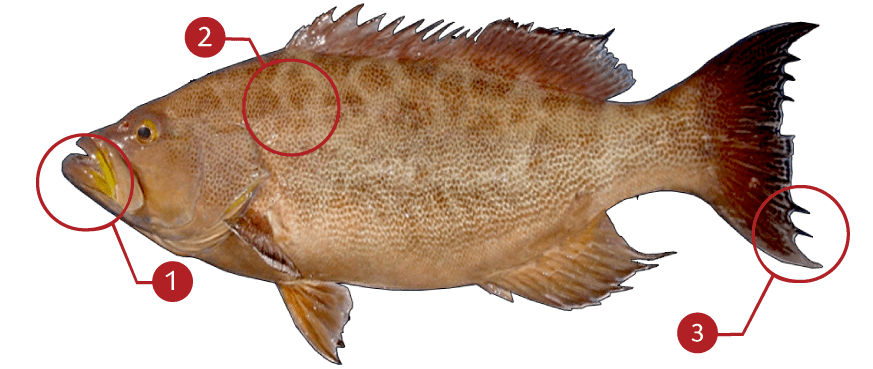SCAMP GROUPER
How to identify a Scamp Grouper
The scamp grouper has a typical body shape for a grouper but has elongated rays protruding from the caudal fin like those of a broomtail grouper. The body is deep tan or chocolate brown in color and there are numerous darker markings that form dots, lines or groupings of lines. Like many species of grouper, the scamp grouper is born as a female specimen and transforms into a male as it grows larger. Sexual maturity is reached when the fish is approximately 12 inches in length. Most specimens of 24 inches or less are typically female. Scamp grouper feed primarily on other fish but crustaceans and octopus are also common food items. A scamp can and will feed on anything that it can fit into its mouth. These fish can be found most often hiding under structure such as rocks, ledges, wrecks, or reefs and will ambush prey as it swims by. Most scamp grouper will be less than 10 pounds but some of the largest specimens may reach 20 or more pounds.
Where to catch Scamp Grouper
The scamp grouper ranges from North Carolina down through Florida and into the Gulf of Mexico where it is most abundant. This fish can be found over hard bottoms such as rocky outcrops and coral reefs found in deeper waters (100-300 feet) than most other groupers. Juvenile fish tend to remain in shallower waters and occupy areas with structure such as jetties and mangroves. The scamp grouper is the most common grouper species found off of the west coast of Florida and these fish are particularly fond of Oculina coral formations.
IDENTIFICATION

| |
Corners of mouth may have yellow coloration |
| |
The body is deep tan or chocolate brown in color and there are numerous darker markings that form dots, lines or groupings of lines |
| |
Elongated rays protruding from the caudal fin |
TARGET AREAS
|
|
Acknowledgements: We thank TAKEMEFISHING.org (www.takemefishing.org), Wisconsin Department of Natural Resources, Indiana Department of Natural Resources for their contributions to these FISH FACTS.

